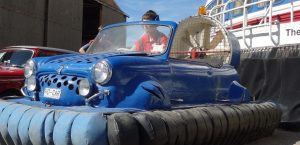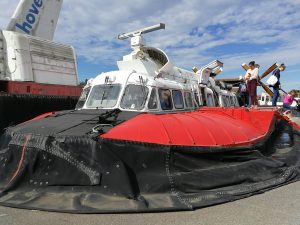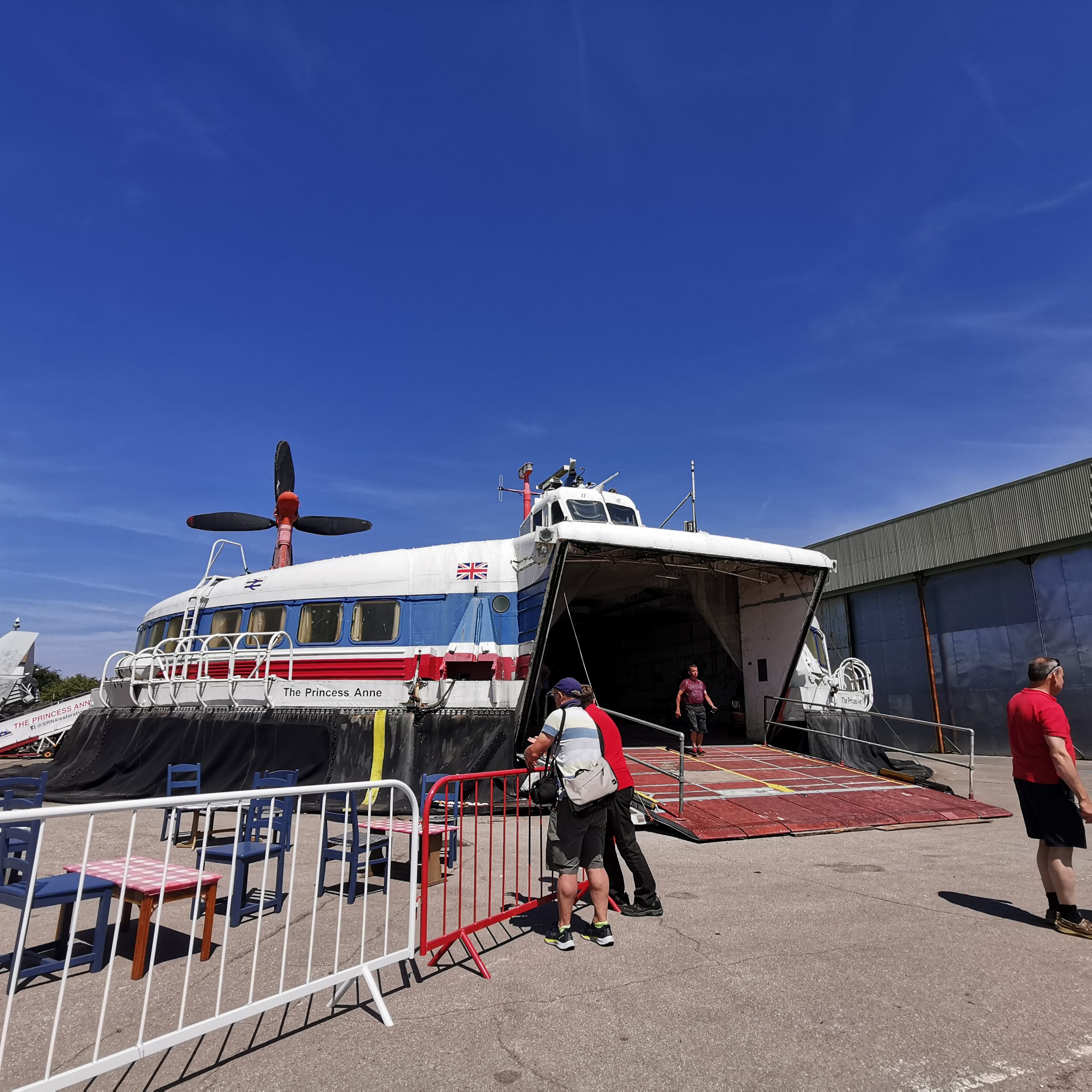Did you know that the first Hovercraft had its maiden journey in the Solent by Gosport?
After working for Marconi, where he helped to invent radar, the “hovercraft” inventor Dr Christopher Cockerell patented the word and invention in 1954. Aware of D-Day and Normandy landings Cockerell thought about how to get troops dry-shod and safe up a beach fast. In his Norfolk boatyard he put his mind to this problem and set up Ripple Craft.
By placing two tins one inside the other and reversing the connections on a hair-dryer he was able to show that annular jets of air form an air cushion to reduce friction and enable boats to travel faster.
By 1958 the first Hovercraft, the SR-N1, was being built with Government support and this “boat” was suddenly fully amphibious.
Soon ship and aircraft builders were making amphibious all-terrain vehicles that hovered over land and water. On the maiden journey the hovercraft conducted a brief trial in the Solent, by Gosport. With Sir Christopher strapped to the bow to provide stability, the SR-N1 flew the English Channel from France to England, paving the way for giant car carrying craft within ten years.
The SR-N1 was to eventually perform trials on later dates from the slipway at HMS Ariel ( HMS Daedalus) with the Interservice Hovercraft Trials Unit.
Stretching or lengthening existing hovercraft designs was recognized as a means of increasing payload capacity without any significant impact on fuel consumption.
Further advances in skirt technology, along with advances in diesel engine technology and more modern construction methods all went to improving the commercial viability of hovercraft.
The first hovercraft (SRN1) was built nearby in East Cowes, Isle of Wight by Saunders-Roe. East Cowes is best known for hovercraft production though, with the British Hovercraft Corporation (BHC) being formed in 1966, as a result of a merger of Westland Aircraft, Vickers Armstrong and the National Research Development Corporation. Around 100 hovercraft were built by BHC.
The Sixties and Seventies saw hovercraft develop worldwide with gas turbines and riveted aircraft technology and prove themselves as true amphibians in many new roles. Passenger journeys were operated daily from 1965 to 1968, operating to Ryde. By the end of the decade the fuel crisis saw the doubling of running costs and hovercraft became less cost effective. Fortunately in the 1980s with new cost-effective craft running on diesel and constructed with welded aluminium hulls, the hovercraft re-established itself.
Most of the places they were needed were areas with less developed infrastructure and were the poorer regions of the world. It is only in recent times that these less developed countries have been able to afford these new craft that they need for multiple transport tasks.
By 2000 the British patents on most hovercraft had lapsed and suddenly anyone could build and buy craft without 10% going to the UK treasury.
In recent years hovercraft have enjoyed a renaissance and there is now a £30 million industry in the UK alone. Hovercraft are here to stay and the Hovercraft Museum at Lee on the Solent exhibits half a century of innovation in design with professional and amateur builds of this great British invention!
The Hovercraft Museum in Lee-on-the-Solent is the World’s only hovercraft museum! The site of the Hovercraft Museum has had a connection with hovercraft for over 60 years.
Book here to visit on 11 and 18 September:
www.gosportheritage.co.uk/hovercraft-museum-tour-2022/






